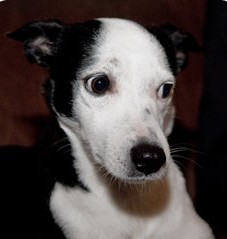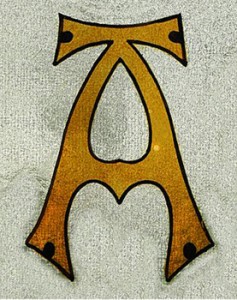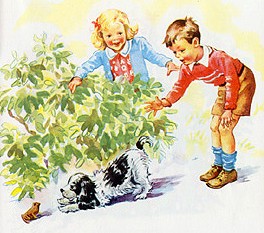A different perspective on the so called “alpha roll”—see how to do a “real” one. This is the fun kind and the only kind we do with Saffron.
The Myth Of “Normal” Dogs
 Wishing you had a normal dog? One that doesn’t get stressed from being left alone? Or that doesn’t roll in stinky stuff? Or one that doesn’t bark? If your dog does those things or other things we humans find problematic, you already have a “normal” dog. What we really want are abnormal dogs. Casey Lomonico does a great job looking at what a normal dog is really like. She also looks at normal dog owner behavior—a sad commentary, to be sure. Casey is a dog trainer & behaviorist and a Karen Pryor Academy Certified Training Partner.
Wishing you had a normal dog? One that doesn’t get stressed from being left alone? Or that doesn’t roll in stinky stuff? Or one that doesn’t bark? If your dog does those things or other things we humans find problematic, you already have a “normal” dog. What we really want are abnormal dogs. Casey Lomonico does a great job looking at what a normal dog is really like. She also looks at normal dog owner behavior—a sad commentary, to be sure. Casey is a dog trainer & behaviorist and a Karen Pryor Academy Certified Training Partner.
Gardening With Dogs Part II
 You can have a nice garden and have dogs at the same time. It takes a little work, some clicker training, & consistency, but it’s so worth it. Imagine not constantly telling your dog “No”, not having a yard full of holes, or having your flower beds turned into dog beds.
You can have a nice garden and have dogs at the same time. It takes a little work, some clicker training, & consistency, but it’s so worth it. Imagine not constantly telling your dog “No”, not having a yard full of holes, or having your flower beds turned into dog beds.
Check out these really good suggestions for how you can train your dog not to garden.
You can bolster your training by employing these easy tips for keeping pets out of your flower beds.
Here are more great ideas on gardening with dogs. And check out what will be your garden’s best friend—the doggy digging pit!
Training Tip: “Go See Jane”
One of the first things we taught Saffron when we got her was “Go see Sarah” & “Go see ‘Mr. Fire'”.
(‘Mr. Fire’ probably needs some explanation. I asked my husband how he would like to be referred to in my blog. I had already vetoed ‘The Husband’ & ‘The S.O.’ He shot down ‘Mr. PetProject’ and ‘Mr. P.I.C.’ (Mr. Partner In Crime). I then suggested ‘Mr. McBurny’ and he piped up with “Call me ‘Flame’!” Really? “Yes, call me ‘Flame’ or maybe ‘Mr. Flame’.” ‘Mr. Flame’ sounds like you’re flamey in a gay way, and though there’s nothing wrong with being flamey in a gay way it might confuse readers who know I’m a female married to a male. [At this point I’m tempted to look at why, semantically speaking, adding ‘Mr.’ to ‘Flame’ makes it sound flamey in a gay way, but then I’ll really have digressed from what is supposed to be a post about a dog training tip.] ‘Flame’ was his choice because lately he has really gotten into making biofuel stoves. In the evening, we’ll be hanging out on the couch and he’ll say, “I’m going to go burn stuff.” To which I reply, “Okay, let the dog come if she wants.” So he’ll be out there in the dark with a head lamp testing new stove designs. Sometimes I get a call that I should come check out the awesome flame. So I tried to write this post using ‘Flame’, but I just couldn’t do it. Because of the nature of this post, I had to keep writing Flame-this & Flame-that. So I asked if he really wanted to be known in perpetuity as ‘Flame’, to which he conceded perhaps he did not. Thankfully we settled on ‘Mr. Fire’, which is somehow a little more dignified, though I have no idea why.)
So, if you’re still with me, back to the training tip! Here’s why you might want to teach your dog “Go See Jane”:
- it’s a good way to start teaching “Come”
- it’s a good way to start teaching “Find It”
- it’s a great for exercising your dog
- it’s super handy for redirecting a bothersome pup
How to do “Go See Jane!”:
- you need at least 2 people & some good treats
- person ‘A’ (me Sarah) stays in one room with the dog while person ‘B’ (Mr. Fire) goes to another room within hearing distance of Sarah
- Sarah says, “Go see Mr. Fire!” and Mr. Fire immediately calls the dog to come & gives a treat when the dog comes
- then Mr. Fire says, “Go see Sarah!” and Sarah immediately calls the dog to come & gives a treat when the dog comes
- repeat, and reinforce by doing it every few days at random times
- the dog learns “Go See Jane” and gets reinforcement for “Come!”, of course you need to work on “Come!” by itself to have a good recall.
“Go Find Jane!” variation once your dog knows “Go See Jane!”:
- you still need 2 people & some treats
- Sarah stays in one room with the dog, while Mr. Fire goes & hides somewhere in the house, but not too hard a spot to start out with. The dog needs to succeed in order to learn what “Find it!” means.
- don’t let the dog leave the room until you say, “Go find Mr. Fire!
- Mr. Fire stays very quiet in this version.
- if the dog doesn’t find Mr. Fire quickly, Mr. Fire makes a little noise to give the dog a hint. Give treats when the dog comes.
- then Mr. Fire says, “Go find Sarah!”. From then on each person find a new place to hide.
- repeat, and reinforce by doing it every few days at random times
We use both of these commands at the dog park to make sure Saffron gets some good exercise in. She LOVES running from one of us to the other, especially if we hide. I use it to redirect Saffron when she’s bugging me while I’m working. And we find it very useful when we have guests—we just tell our guest to send Saffron to one of us if she’s bothering them. Very handy!
Training Tips: Fearful Dogs Part I
 Lately I’ve been bombarded with bad examples of people dealing with fearful dogs and it’s left me feeling pretty crappy. My dog, Saffron, is an anxious dog and if I’d used the “techniques” I’ve been seeing, I would have ended up with a basket-case of a dog who couldn’t leave the house. So, to exorcise these sad examples, I’m going to offer some alternatives to what I’ve seen.
Lately I’ve been bombarded with bad examples of people dealing with fearful dogs and it’s left me feeling pretty crappy. My dog, Saffron, is an anxious dog and if I’d used the “techniques” I’ve been seeing, I would have ended up with a basket-case of a dog who couldn’t leave the house. So, to exorcise these sad examples, I’m going to offer some alternatives to what I’ve seen.
The first example is a group of people and about 15 dogs at the dog park who are gathered together so the humans can chat. The humans aren’t paying attention to the dogs. There’s a fair bit of roughhousing & vocalizing going on with the dogs, but nothing excessive. An elderly Italian Greyhound on the edge of the group near her human is clumsily & boisterously approached by a Great Dane puppy. The puppy is taller than the elderly dog and easily weighs twice as much. The elderly dog lifts her lip and then barks & snaps at the puppy. The puppy gets the message and backs off.
The humans, on the other hand, don’t get the message. The elderly dog’s owner scolds her and then pins her on her side amidst the swarm of dogs. Another person picks up the Great Dane puppy and forces it in the face of the pinned Italian Greyhound. Then the elderly dog’s owner calls all the dogs to come sniff the pinned dog. The pinned dog’s response is to offer the only appeasement she is able to in this position which is a weak little tail-whap on the ground. Pitiful.
In this instance, the dogs had already taken care of the problem. The elderly dog told the puppy to back off, and the puppy did just that. What the humans did messed everything up:
- Pinning the elderly dog who already felt vulnerable is probably only going to exacerbate her wariness of other dogs.
- I think it also erodes the connection between the dog and her human. Instead of being someone safe, her human is now another cause of anxiety.
- It teaches the other dogs that when a dog is in distress & vulnerable, it’s okay and desirable that they exploit the situation.
- I think it teaches the Great Dane puppy that getting picked up by a human means she might get put it a scary position (like being pushed in the face of elderly dog who had clearly said to “piss off”.) None of these are good things.
So what could the humans have done differently? A ton of things!
- Before they ever left the house, the owners of the elderly Italian Greyhound should have asked themselves if their dog should even go to the dog park. Is she feeling frail, too vulnerable, too tired?
- Since they decided to take her, they then should ask themselves what she wants to do at the park? Some dogs like to wander around sniffing things, others love to play, some just want to play fetch. I think there were clues the elderly dog didn’t want to be in a group of rambunctious dogs and was generally uneasy. She was standing at the edge of the group and near her human—not joining in at all, but also not going off on her own.
- I think her human should have moved off from the group some to give her a break. Simply by not being in the thick of things, the Italian Greyhound might have relaxed enough that an obnoxious, huge puppy wouldn’t have worried her as much. But they didn’t, and the elderly dog had to issue her stern warning to the puppy to back off.
What should they have done instead of pinning her and making her even more vulnerable? I think they should have kept silent and calmly moved off some to given her some space, but not to completely leave the area right away or the park outright. This gives her a chance to recover without getting the message that the situation was so dire she and her human had to flee.
What would calmly moving off have taught the elderly dog? That it’s okay to tell obnoxious dogs to back off. That the situation wasn’t high risk or dangerous since she wasn’t hustled off with a big to-do. If the people still wanted the two dogs to interact to see how it went, they should follow the elderly dog’s lead. They could move even further from the swarm of dogs and then encourage the puppy & the older dog to interact. But, NOT force them. If the Italian Greyhound didn’t want anything to do with the puppy, they should just move on.
Here’s a To Do List:
- should the dog go to a dog park?
- pay attention!
- diffuse stress, don’t add to it
- don’t make the dog vulnerable
- don’t force interactions
- do your best to set up a positive experience to help build the dog’s confidence
Want to learn more about your dog? Check out Canine Body Language: A Photographic Guide, a favorite of mine.

